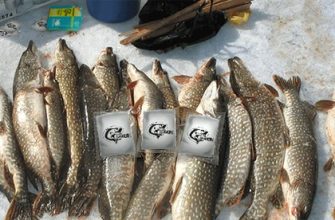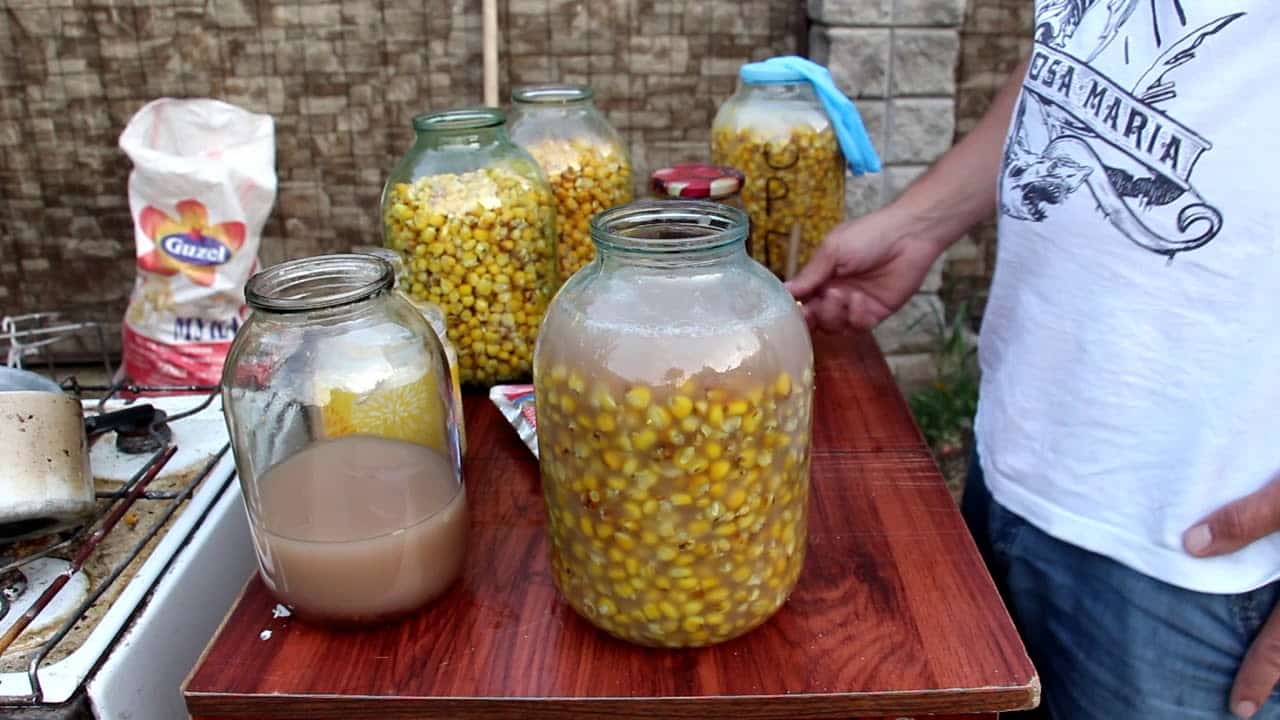Every fisherman knows that the more interesting and attractive the bait, the more chances for a rich catch. The mealworm is not inferior to maggot or zophobas. Does not require specific knowledge for successful breeding. Well suited for long-term storage. Used as a bait and as an independent bait.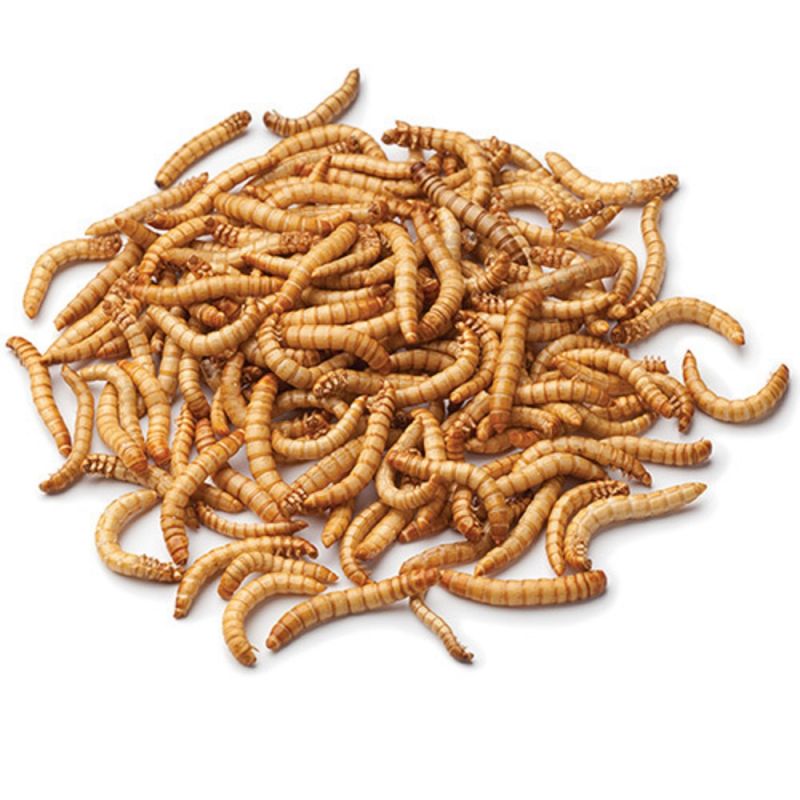 The larvae of the tormentor do not look very presentable, but they are tasty for fish [/ caption]
The larvae of the tormentor do not look very presentable, but they are tasty for fish [/ caption]
- Muchnik, he is a mealworm or a beetle – who is he and what do fish eat him with?
- Habitat
- Life cycle
- Application area
- How to use when fishing
- Where to look for a mealworm
- How to store mealworms
- How to separate a live beetle from a dead one
- How to breed a mealworm at home: instructions from A to Z
- Choice of mother liquor
- Dilution substrate
- How to grow and feed mealworms
- Humidity and temperature
- Screening of broodstock
- Replenishment of livestock
- How to store larvae on long and hot fishing
- How to plant and catch
- Adding mealyworms to groundbait
- Поделиться ссылкой:
Muchnik, he is a mealworm or a beetle – who is he and what do fish eat him with?
The mealworm is the larval stage of the mealworm. It is sometimes referred to as a bobbit worm, beetle grub, bone beetle, flour beetle, or food worm. Beetles can grow from 2 to 3 cm, worms from 3 to 3.5 cm. Larvae are omnivorous, but prefer flour products. The larval stage of the mealworm is suitable for fishing. Mealworms reproduce very quickly, but do not live long. This species is not related to earthworms. They are not hermaphrodites, therefore, different-sex individuals are needed for reproduction. When breeding large colonies, gender does not really matter, as there are usually females and males in the same cage. Quite undemanding look. With good care and maintenance, the flour beetle reproduces well at any time of the year.
Habitat
Khrushchak is widespread in the southern and northern regions of the Russian Federation, Europe and Asian countries. Settle in grocery warehouses and granaries. In nature, it is found inside rotten wood, under the bark. Prefers warm, damp places with a large accumulation of vegetation and organic matter. It causes significant economic damage every year. Harm is caused not only by the larvae, but also by the beetles.
Life cycle
The female beetle is capable of laying from 280 to 600 eggs. The larva takes 10 to 20 days to mature. Larval development depends on temperature and availability of food. Under good conditions, the larvae grow in 3-4 months. Optimum temperature +20 +25 ° C. They are able to go into hibernation and live without food for 6 to 8 months. Adult larvae begin to pupate when the temperature drops and there is no food. The pupal stage lasts 10 to 40 days. The beetle lives from 90 to 140 days. The full development cycle lasts from 6 to 10 months. The timing of development directly depends on the temperature and availability of food.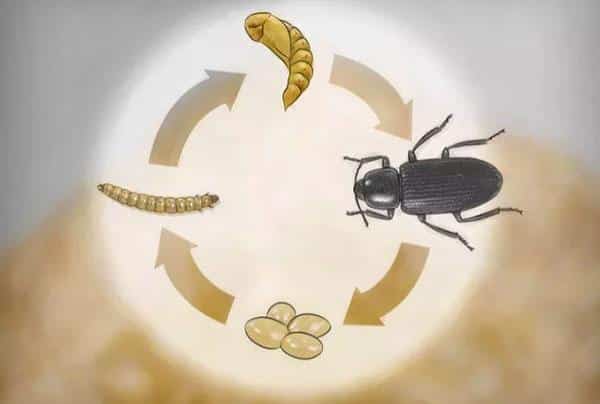 In the photo, the life cycle of the flour beetle – from larva to beetle [/ caption]
In the photo, the life cycle of the flour beetle – from larva to beetle [/ caption]
Application area
The tormentor has a fairly wide range of uses. It is used as a food insect, as bait or bait for fish. And also eaten. Larvae are believed to be an excellent source of protein. 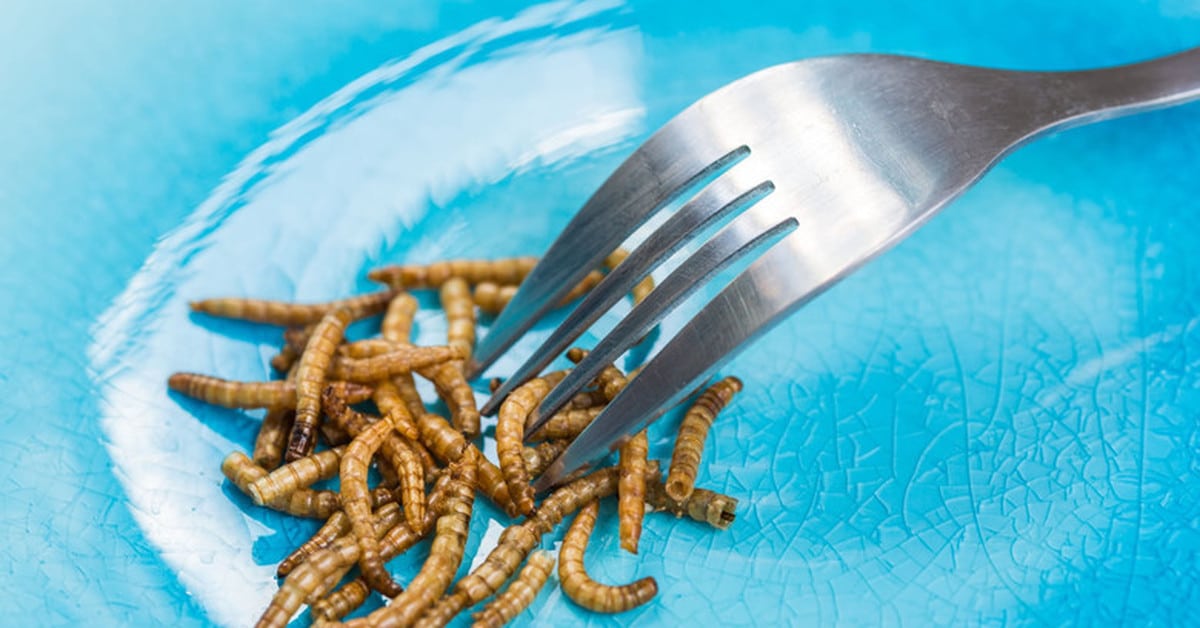 Fish and people eat mealworms
Fish and people eat mealworms
[/ caption]
Interesting fact! In some countries, the flour beetle is bred on special farms. Adult larvae are cleaned, boiled and dried. The finished product is salted and sold to the public. Protein aficionados claim that dried worms taste like fried bread.
How to use when fishing
Muchnik serves as a good bait when catching
herbivorous peaceful fish and some species of
predators . It is usually used for catching and feeding
carp ,
carp ,
crucian carp ,
roach . As bait, the tormentor is suitable for catching perch, crucian carp, rotans and other representatives of the ichthyofauna. This bait often works during the cautious bite period. Sometimes trophy specimens peck at mealworms, which are suspicious of the smell of dung worms. The larva is practically odorless and does not scare away fish even in a hot season. Suitable for bottom,
feeder and
float fishing… Used in winter fishing as an alternative to maggot. To enhance the mobility and smell of bait, larvae are often added to the composition of complementary foods.
The downside to using is that the worm quickly dies in the water. Therefore, you need to make frequent reloads and update the roster.
Where to look for a mealworm
Breeding stock can be purchased at the pet store or breeders. For the development of a colony, 30-50 pieces of larvae or 10-20 adult beetles are needed. It is better to buy a small amount of beetles or larvae once a year to renew the blood. You can find worms in rotten wood, at grain processing plants. And also in grain warehouses, poultry houses and home products. Some anglers practice luring beetles. To do this, flour and bread crumbs are poured into a jar or ceramic pot. The trap is placed outside under a lantern or lamp. Beetles fly into the light at night and gather near the feeder. Summoning a worm can only work in places of permanent residence of beetles and larvae. Near granaries, rotten stumps or poultry farms.
How to store mealworms
The advantage of this type of worm is the convenient storage of the finished bait. Adults should be divided into small containers and refrigerated. In this form, the flour beetle can be stored from 6 to 10 months without feeding and replacing the substrate. It is important to avoid overheating and getting wet. Small plastic containers or regular jars are suitable for storage. A nutritious substrate is poured at the bottom and worms are planted. In a container with a volume of 200 grams, you can comfortably place from 300 to 400 individuals.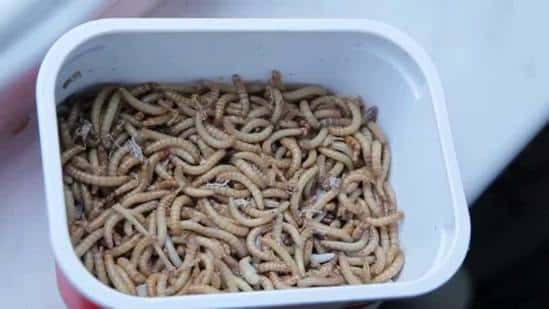 Storage of larvae [/ caption] Worms need air, even in a state of suspended animation. Therefore, holes are made in the lid for ventilation. Store in tall pans without a lid. Also, worms can be stored in any cool place where the temperature is kept within +2 + 10 ° C. When the temperature rises, the larvae begin to pupate. The worms tolerate a short-term drop down to – 2 ° C.
Storage of larvae [/ caption] Worms need air, even in a state of suspended animation. Therefore, holes are made in the lid for ventilation. Store in tall pans without a lid. Also, worms can be stored in any cool place where the temperature is kept within +2 + 10 ° C. When the temperature rises, the larvae begin to pupate. The worms tolerate a short-term drop down to – 2 ° C.
How to separate a live beetle from a dead one
The live larva is yellow-orange in color. Dead worms turn black and dry up. Separating the living is easy enough. To do this, you need not feed the larvae for a couple of days, and then install a container with food in the container. Live larvae will quickly slide down to the treat. This procedure is repeated for 3-5 days. After that, the substrate with dead worms can be thrown away.
How to breed a mealworm at home: instructions from A to Z
Breeding a mealworm is easy. The larvae do not have a pronounced odor, therefore, they are perfect for keeping in an apartment.
Choice of mother liquor
High plastic containers, terrariums, aquariums, metal buckets or wooden boxes lined with tin are well suited for home breeding. A lid is required if the container is below 20–30 cm. You can cover the container with a fine mesh. To prevent the worms from scattering, the edges of the container are coated with petroleum jelly. If the container is equipped with a tight lid, a ventilation window is made in the side of the container, which is sealed from the inside with a mesh. Holes are sometimes made in the lid.
ATTENTION! The mother liquors should not be placed in the sun or near heating appliances. It is better to choose a warm, shaded place for the beetles.
Dilution substrate
To compose the substrate, a mixture of sawdust, flour, rolled oats and bran is used. All ingredients are ground and poured into the mother liquor. The height of the substrate is from 10 to 30 cm, the thickness depends on the number of individuals. The layer of the nutrient mixture should be 10-15 cm below the edge of the container. [Caption id = “attachment_4201” align = “aligncenter” width = “800”]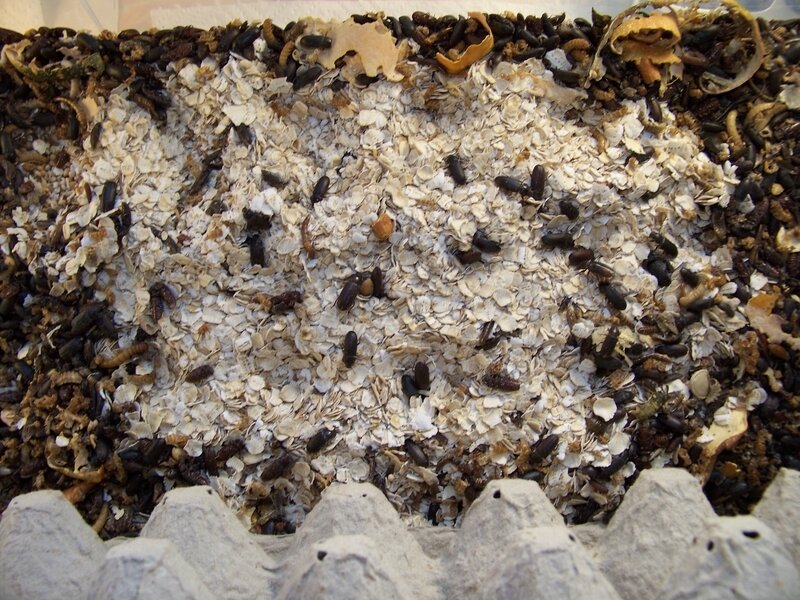 You can propagate a mealworm in a properly composed substrate [/ caption] On the surface of the substrate, you can put egg cells or rotten pieces of wood. This will increase the area of the mother liquor and facilitate feeding. Wet feed can be put on the cardboard without the risk of waterlogging the substrate. It is necessary to monitor the state of the mixture. If mold or rot forms, you need to urgently clean the area or completely replace the substrate. Breeding a mealworm at home and growing it on a special farm: https://youtu.be/R4JrztAc2SY
You can propagate a mealworm in a properly composed substrate [/ caption] On the surface of the substrate, you can put egg cells or rotten pieces of wood. This will increase the area of the mother liquor and facilitate feeding. Wet feed can be put on the cardboard without the risk of waterlogging the substrate. It is necessary to monitor the state of the mixture. If mold or rot forms, you need to urgently clean the area or completely replace the substrate. Breeding a mealworm at home and growing it on a special farm: https://youtu.be/R4JrztAc2SY
How to grow and feed mealworms
In addition to the main food, which is the substrate, worms are happy to eat various foods. It is best to feed the colony in small portions every day. It is best to chop the feed before serving. What can you feed the larvae:
- boiled egg;
- grated carrots;
- Apple;
- bone or fish meal;
- potato;
- dry food for cats and dogs;
- compound feed or bran;
- banana peel;
- dry mixes for children;
- gammarus, daphnia or other fish feed;
- bread crumbs, bread crumbs;
- powdered milk.
The larvae are omnivorous, but do not get carried away and feed them with anything. It is better to follow a specific diet and feeding regimen.
Important! It is necessary to remove feed residues from the substrate. In dry mixes, rot and mold develop rapidly. A spoiled substrate can destroy an entire colony.
For drinking, you can put a jar lid with a piece of damp sponge on the bottom of the substrate. The sponge is moistened or changed as needed.
Humidity and temperature
There is no need to moisten the substrate. As a last resort, you can slightly moisten a piece of wood or cardboard. Do not spray on the substrate itself. The optimum temperature for reproduction and growth is from +20 to +25 ° C. If the room is cold, a terrarium heater or heating cord is installed in the mother liquor.
Screening of broodstock
Beetles should live in the mother liquor for 2-2.5 months. After that, using a sieve, adults are separated from the substrate and transferred to a new container.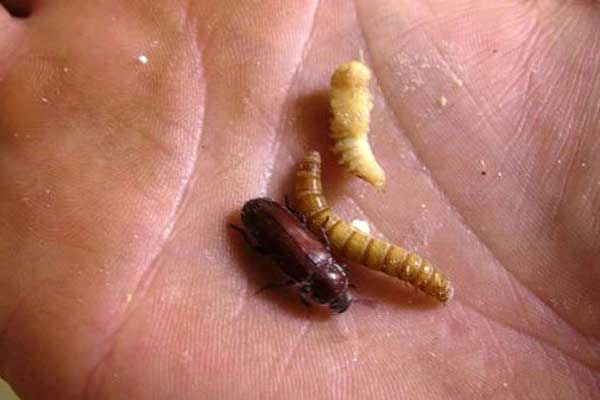
Important! If the beetles are not removed, they will eat the eggs.
The larvae grow and develop from 1 to 3 months. Then they need to be divided into containers and put in the refrigerator or other cool place. If the worms are not removed in time, they will pupate and turn into beetles.
Replenishment of livestock
Some fishermen buy beetles in addition in stores. But you can establish your own uninterrupted breeding. For this, adult worms are placed in a separate container and not fed. After 10–20 days, a beetle emerges from the pupa.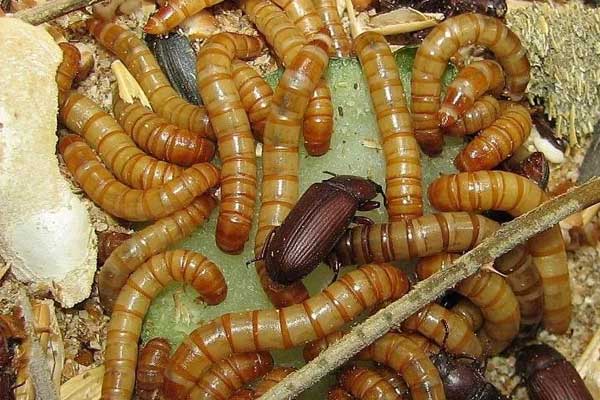
How to store larvae on long and hot fishing
Before going fishing, the worms are placed in a box or container with a lid. It is important not to forget about ventilation. Sawdust or oatmeal mixture is suitable as a substrate. In this form, the tormentor lives peacefully for about a week. For extra moisture, you can put a slice of apple or carrot in the container. In extreme heat, the beetle may die or pupate. Therefore, keep the bait box in the shade or use a thermal bag for storage.
How to plant and catch
For inserting a delicate worm, it is best to use hooks made of thin wire. The puncture is made from the middle of the back to the head. In this place, the scales are denser. Can be inserted one at a time or in a bunch of 2-3 pieces. When planting in a bundle, it is better to cling to the worm’s tail. So he will stay mobile longer. Vegetable flour sandwiches also work well. Castings should be carried out carefully so that the larva does not break and fly off.
Adding mealyworms to groundbait
Worms are added to complementary foods right on the reservoir before casting. The martyr does not differ in vitality in water, so you need to check and fill the feeder more often. Remember that bait and bait should be similar. Therefore, if a beetle is added to the feed mixture, it is better to fish with the same bait. Both live and dried worms are added to complementary foods. Well suited for luring bream, bream, crucian carp, carp, carp and other fish that are not averse to trying a tasty worm. The bait and groundbait with the tormentor can be used at any time of the year. With the right approach to breeding a tormentor, you can not only provide yourself with bait throughout the year, but also make money on the surplus. The maintenance of the Khrushchak does not require a lot of labor and financial investments. The advantages of bait are the versatility and long shelf life of the finished bait.

